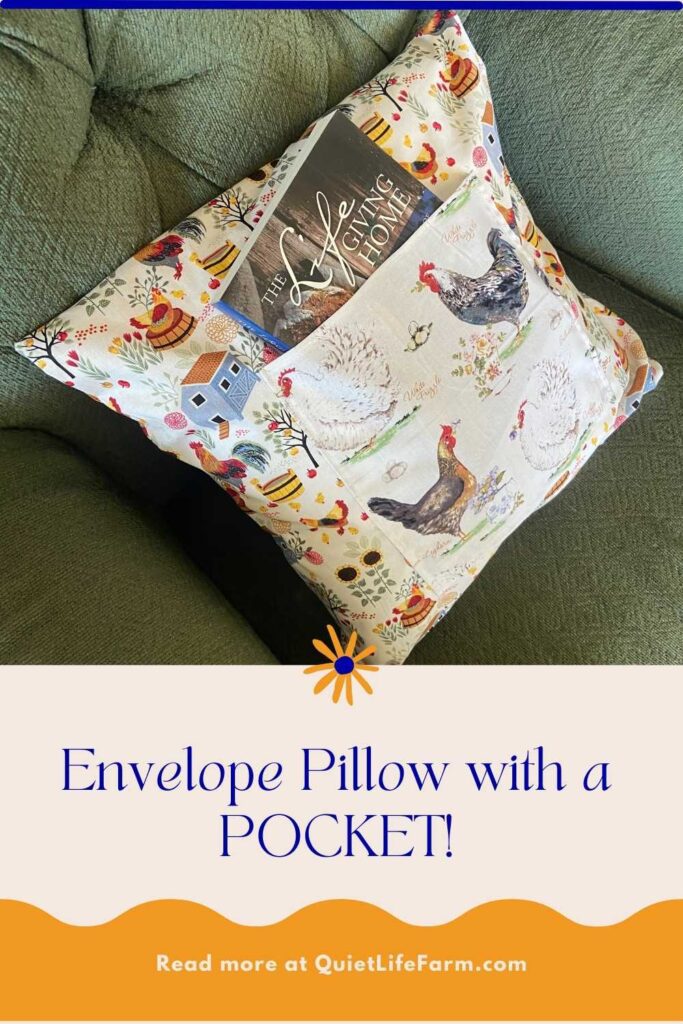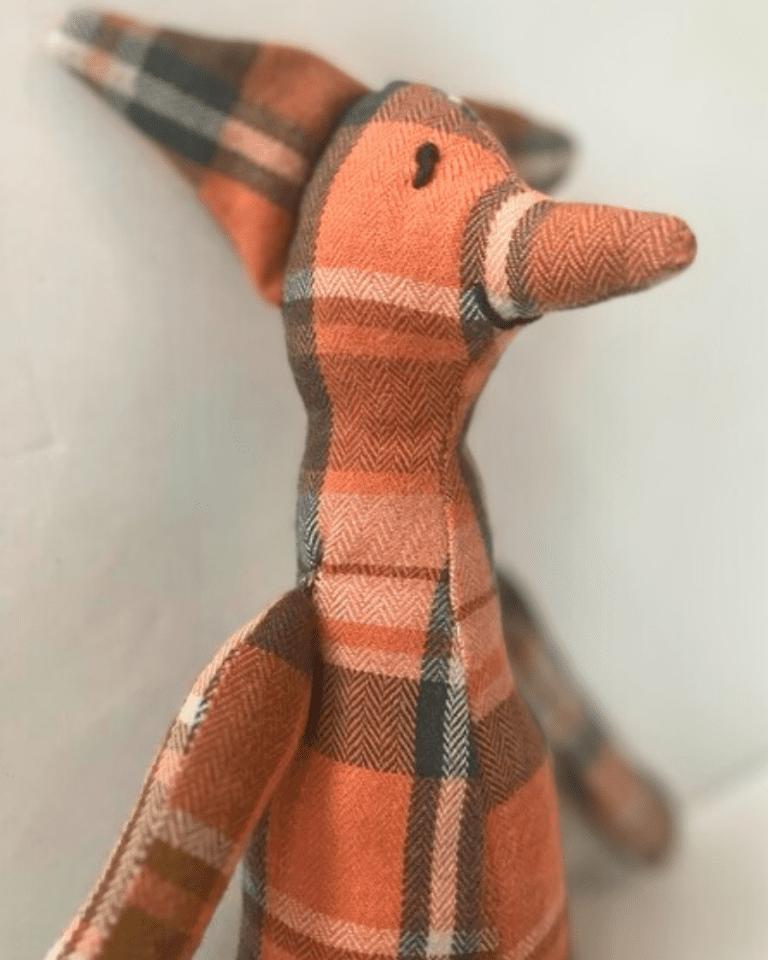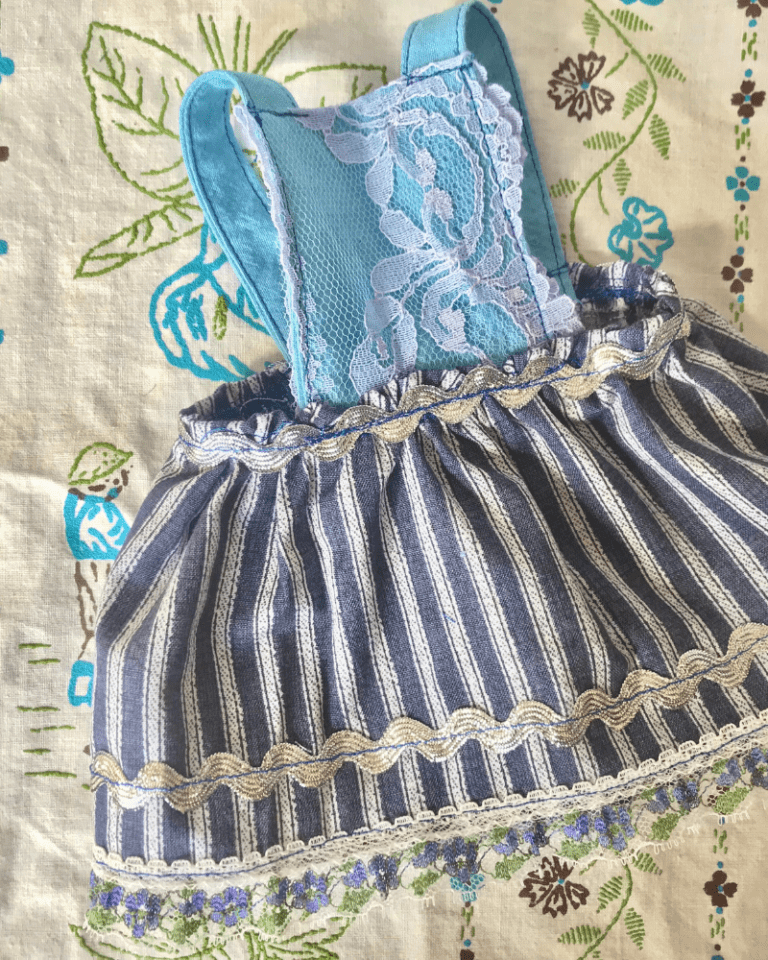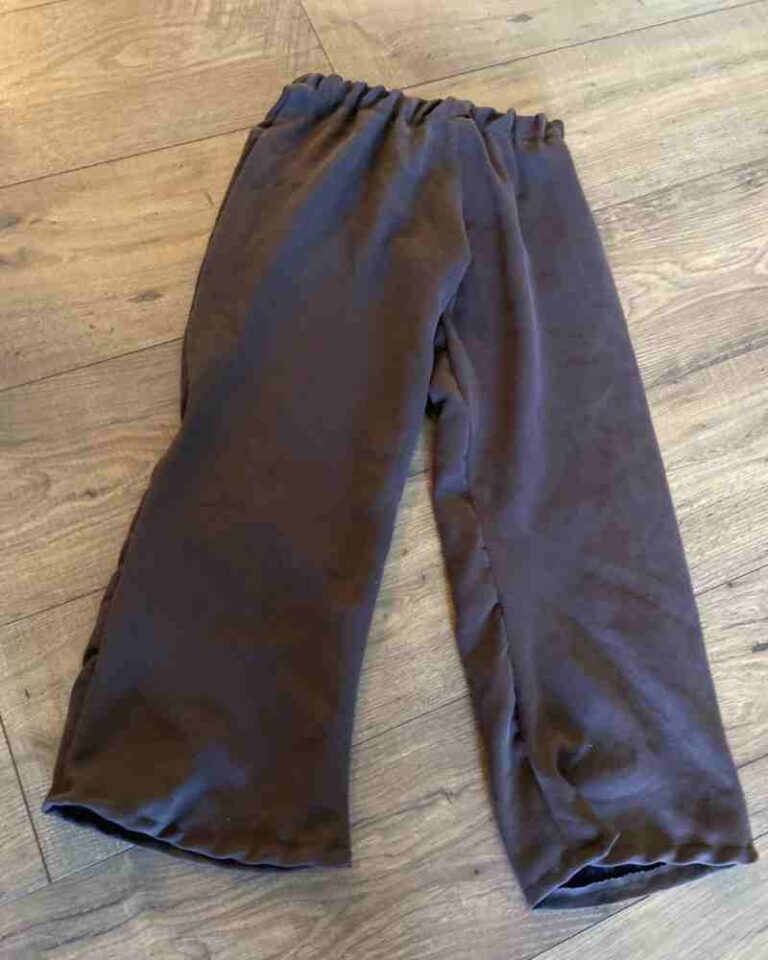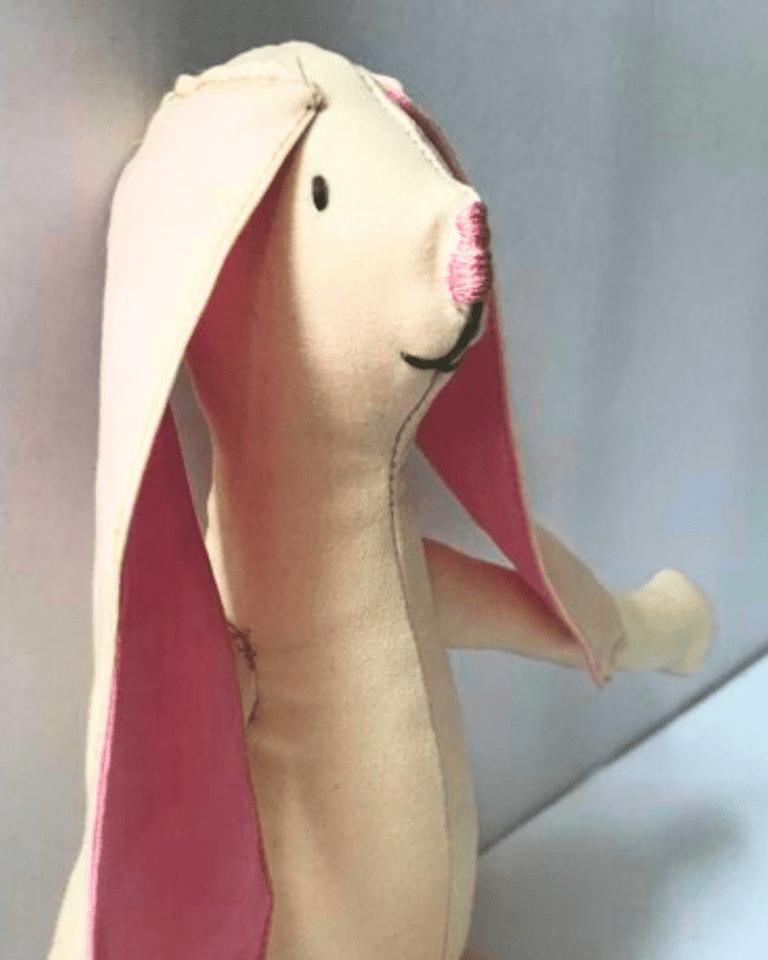How To Sew an Envelope Pillow Cover (with a pocket!)
The easiest way to sew a pillow cover with a twist! This pillow cover includes an oversized pocket, great for storing books!
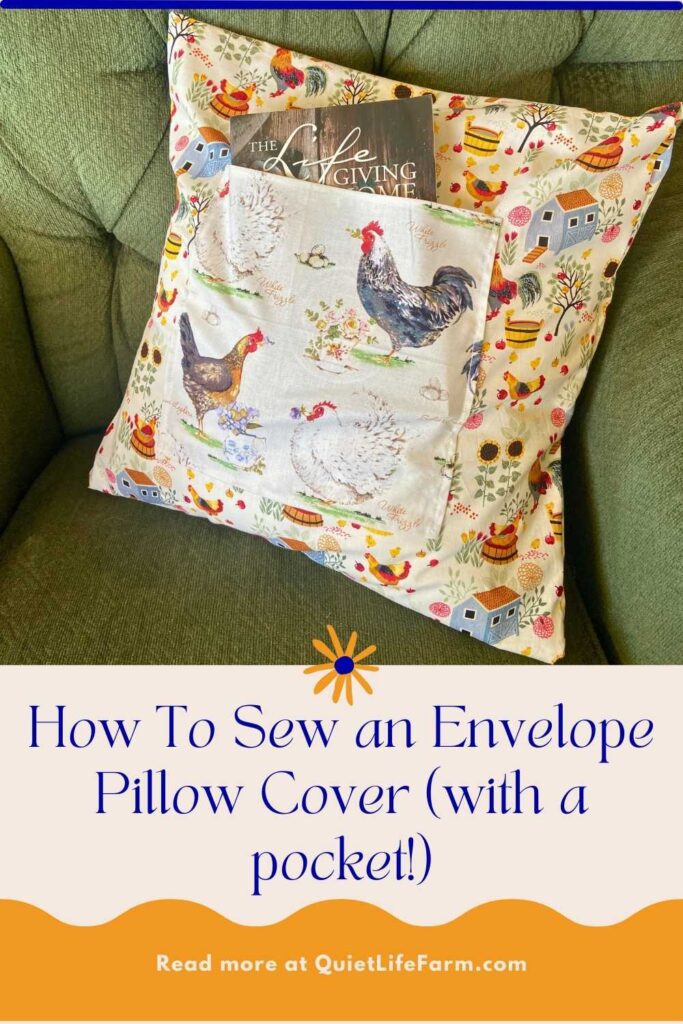
Grab your sewing machine for this fast and easy sewing project!
This easy envelope pillow cover includes a pocket for easy storage.
Store whatever you’d like in it — your child’s favorite bedtime stuffed animal, whatever book you’re currently reading, or the TV remotes!
This pillow can be made in just a few easy steps — it’s just one rectangular piece of fabric for the main envelope pillowcase, and one square for the pocket! So easy!
Let’s get right to it! Happy sewing!
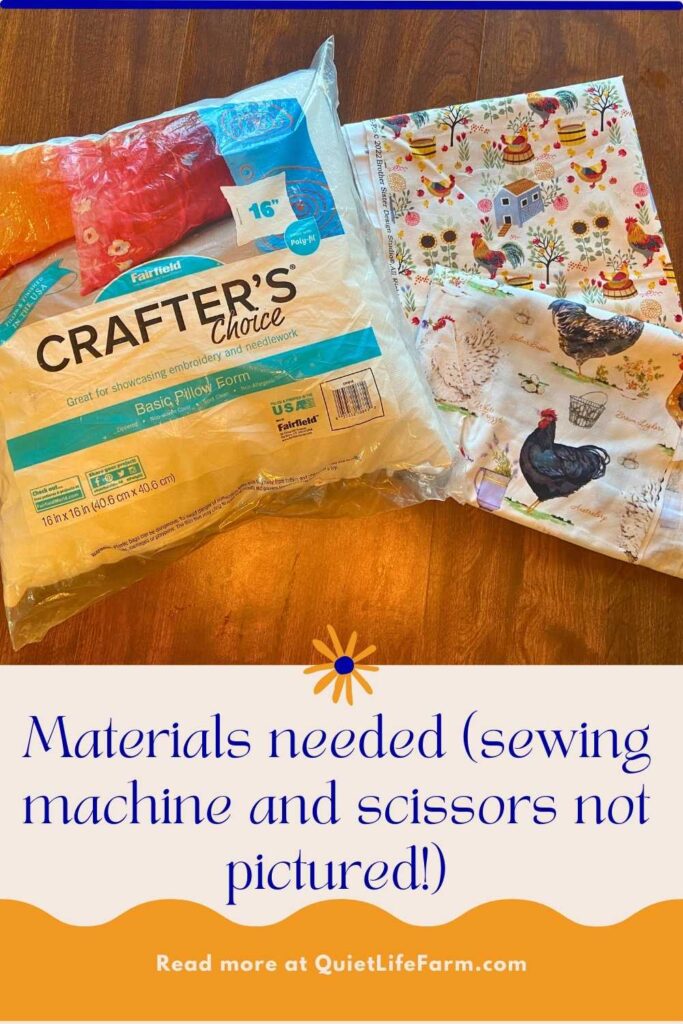
Supplies needed:
- Enough fabric to cover your pillow on both sides, with an overlap
- A little bit of contrasting fabric for a pocket
- A pillow form. I used a 16″ square pillow form, but you can use whatever shape or size for this tutorial!
- A sewing machine (not necessary but boy does it make your life easier!)
- Scissors (or a rotary cutter and cutting mat if you prefer)
- Measuring tape (if you want to use my measurements, otherwise it’s pretty easy to just eyeball this project)
My Measurements:
If you want to use a 16″ Square pillow insert, you can just use my measurements when cutting your fabric.
- For your envelope pillow case, cut one rectangle that measures 20″ wide and 40″ long.
- For the pocket, cut a square that measures 11 1/2″ on each side.
Seam allowance and Hems:
For all seam allowances, use a 1/2″ seam allowance.
On my sewing machine, it’s really easy to follow a 1/2 inch seam allowance. I just guide the fabric along the edge of my presser foot. It’s my favorite seam allowance for beginner and intermediate/advanced sewists alike!
Check your sewing machine manual if you aren’t sure about what this seam allowance looks like for you.
You can also just measure your seam allowance using a fabric tape measure or ruler.
Your seam allowance does not need to be exact for this project. It’s just helpful to have something to go off of!
You can use basic straight seams or a french seam for each side seam! Either is fine. Since the side seams are so well encased on the inside of your pillow case, it’s not crucial to hide those raw edges anymore than they’ll already naturally be hidden.
For your hemmed edges, simply fold your fabric over TWICE so that all those pesky raw edges disappear. This will help prolong the longevity of your pillowcase! Allow yourself roughly a 1 inch hem (or less!).
Step 1: Measure and Cut
First, you’ll want to measure and cut your fabric out.
If you’re using a 16″ pillow, feel free to use my measurements. (20″x40″ for the case and 11 1/2″ square for the pocket)
Otherwise, you can simply measure to any pillow’s size!
To measure to a different size than what my pillow was, simply lay out your fabric on a table or other large, flat surface.
Put your pillow on top of the fabric.
Use your pillow to measure out fabric that is about 2 1/2 pillow lengths long.
It doesn’t have to be precise, but it’s helpful to leave yourself too MUCH fabric rather than too LITTLE fabric, so keep that in mind while eyeballing!
The width of your fabric should be a little bit more exact, otherwise the pillowcase will appear too loose.
To measure your width, you should leave about 2″ of fabric on each side of your pillow to account for the pillow’s “fluff” and your seam allowance.
Again, if you’re unsure, it’s always better to leave yourself too MUCH fabric rather than too LITTLE fabric so that you can adjust later. You can always trip your edges and sew them a little closer to the pillow if you think the pillowcase is too loose!
If you don’t want to eyeball and would rather have more exact measurements for any sized pillow, just measure the size of your pillow insert complete the calculations below to achieve the size of your pillow cover:
- For the length, measure your pillows length. Multiply that number by 2.5.. For example, a pillow that is 16″ long should have a fabric length of 40″.
- For the width, measure the width of your pillow and add 4. For example, a pillow that is 16″ wide should have a fabric width of 20″.
- Your pocket will be whatever size you desire the pocket to be! Just make sure it will fit well on one side of your pillow, and add 1″ to your width and 1″ to your length to allow for your hemmed edges!
Step 2: Hem your edges
Next, we’re going to complete all the hems on this project.
First, you’ll want to hem the edges you want on your envelope opening.
For a square pillow, these are your short edges.
Fold each short edge over twice, then sew a straight line across to complete your hem.

In the same way, hem around all the edges of your square pocket.
(I suggest using a stiff woven cotton fabric for this project, so use a straight stitch while sewing. If you’re using a stretchy knit fabric, you’ll want to sew with a zig zag stitch.)
Step 3: Sew on your pocket
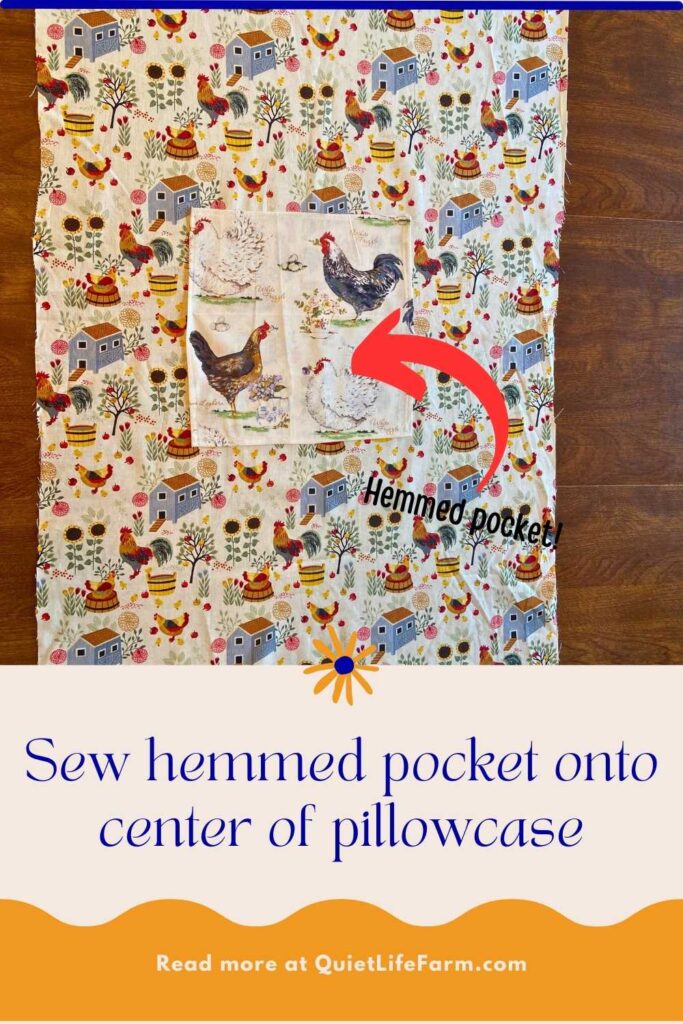
Before sewing your case, you’ll want to attach the pocket.
With the right side of each of your fabric pieces showing, lay your pocket right in the center of your long un-sewn pillowcase fabric piece.
Pin your pocket into place.
Sew your pocket on in a “U” shape so that you have an opening on the top of your pocket.
Try and sew either right over your hem stitches on the pocket, or right next to them so that your stitches look nice and even!
Step 4: Sew your case!
Lastly, you’ll sew your long edges to create your envelope closure on the back of the pillow!
First, lay your fabric (with the pocket now attached!) with the pretty side of the fabric UP.
Lay your pillow insert right in the middle of the pillow case. (Right in the middle of your pocket!)

Fold the top half of your fabric on top of your pillow, snugly.

Then, fold the bottom half of your fabric on top of your pillow, snugly.

Use a pencil to mark where the bottom end of your fabric meets the top half of your fabric. You’ll want at least a 3 inch overlap!

Very carefully slide out your pillow.

Make everything neat and tidy and even, paying attention to your pencil marking where your bottom edge of your fabric should meet the top half of your fabric.
This is the part where you should probably pin everything into place, or risk the fabric shifting around and skip this part like I did.
Note that the wrong side of the fabric will be showing at this step!
Sew straight lines on the long sides of the edges of the pillow case.
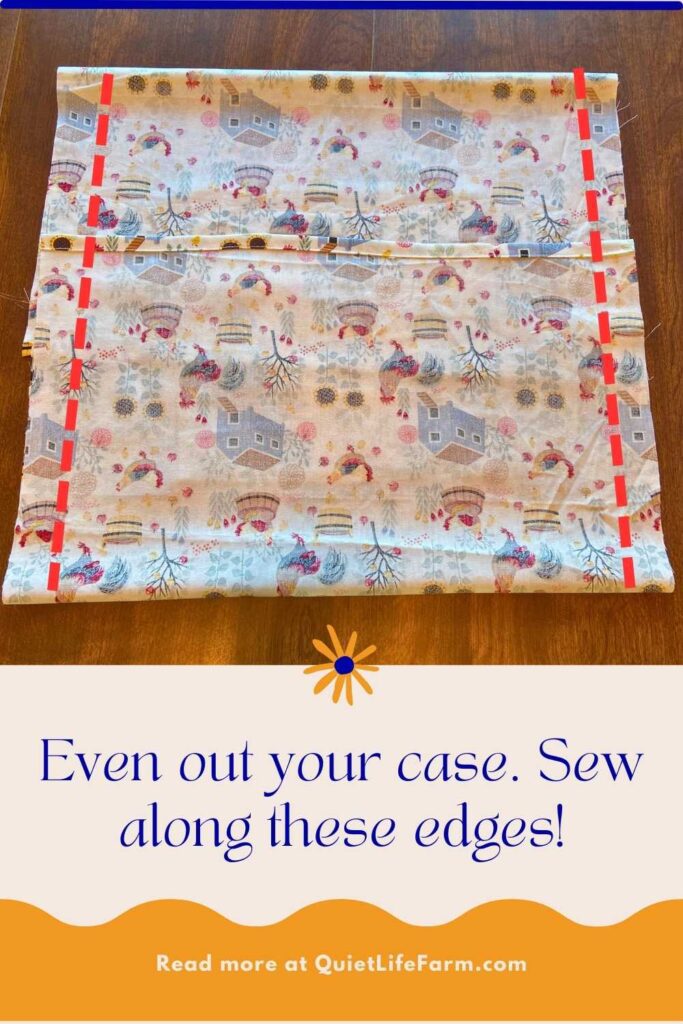
Turn your pillow case right side out and slip your pillow inside!
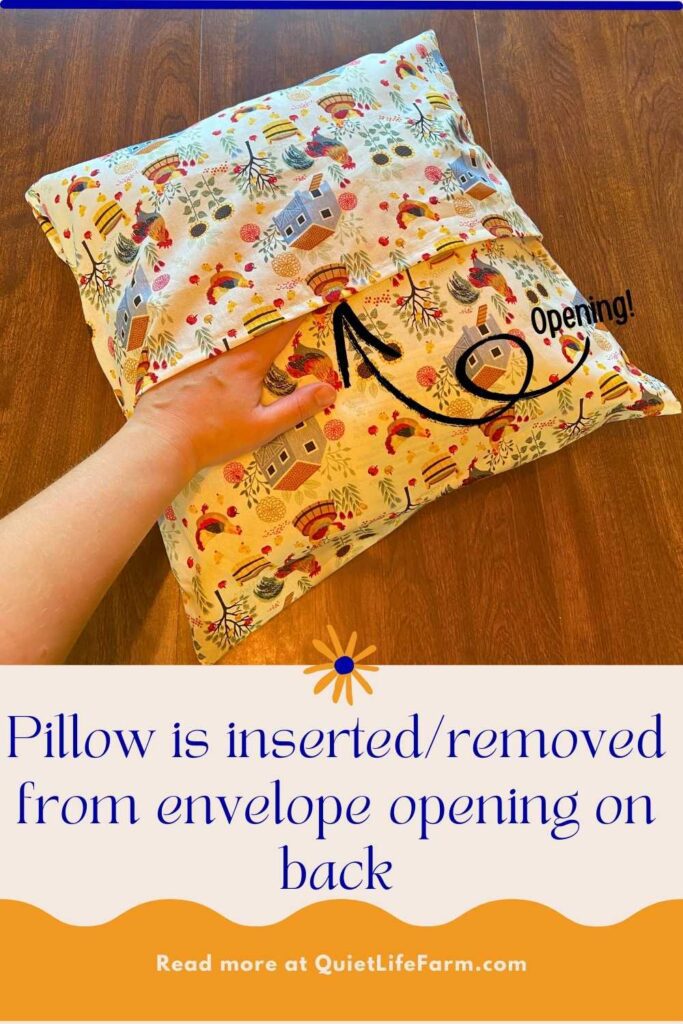
Enjoy the feel of new throw pillows!
Toss your pillow into your living room, or use it as a decorative pillow on your bed!
